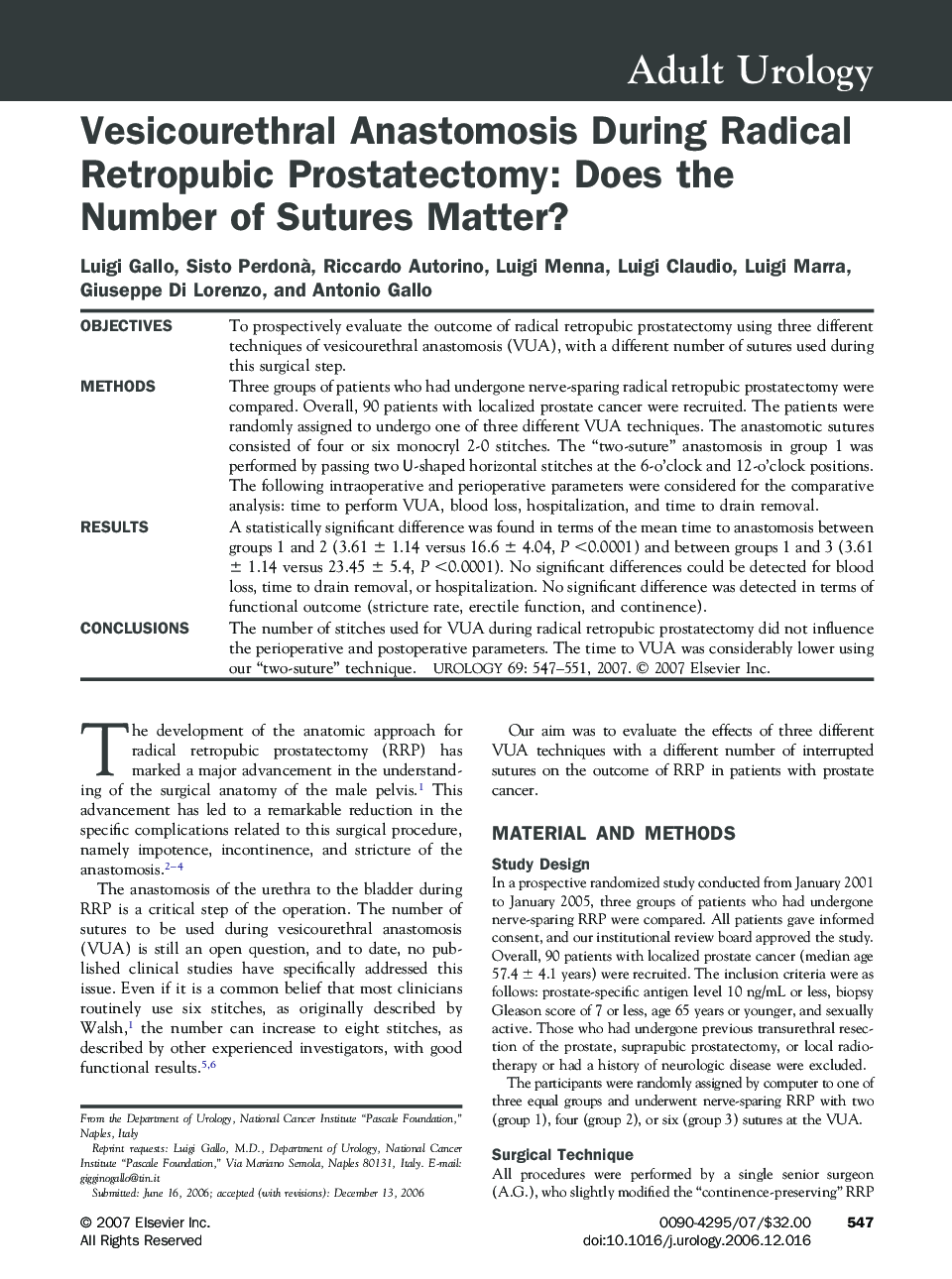| Article ID | Journal | Published Year | Pages | File Type |
|---|---|---|---|---|
| 3906393 | Urology | 2007 | 5 Pages |
ObjectivesTo prospectively evaluate the outcome of radical retropubic prostatectomy using three different techniques of vesicourethral anastomosis (VUA), with a different number of sutures used during this surgical step.MethodsThree groups of patients who had undergone nerve-sparing radical retropubic prostatectomy were compared. Overall, 90 patients with localized prostate cancer were recruited. The patients were randomly assigned to undergo one of three different VUA techniques. The anastomotic sutures consisted of four or six monocryl 2-0 stitches. The “two-suture” anastomosis in group 1 was performed by passing two U-shaped horizontal stitches at the 6-o’clock and 12-o’clock positions. The following intraoperative and perioperative parameters were considered for the comparative analysis: time to perform VUA, blood loss, hospitalization, and time to drain removal.ResultsA statistically significant difference was found in terms of the mean time to anastomosis between groups 1 and 2 (3.61 ± 1.14 versus 16.6 ± 4.04, P <0.0001) and between groups 1 and 3 (3.61 ± 1.14 versus 23.45 ± 5.4, P <0.0001). No significant differences could be detected for blood loss, time to drain removal, or hospitalization. No significant difference was detected in terms of functional outcome (stricture rate, erectile function, and continence).ConclusionsThe number of stitches used for VUA during radical retropubic prostatectomy did not influence the perioperative and postoperative parameters. The time to VUA was considerably lower using our “two-suture” technique.
